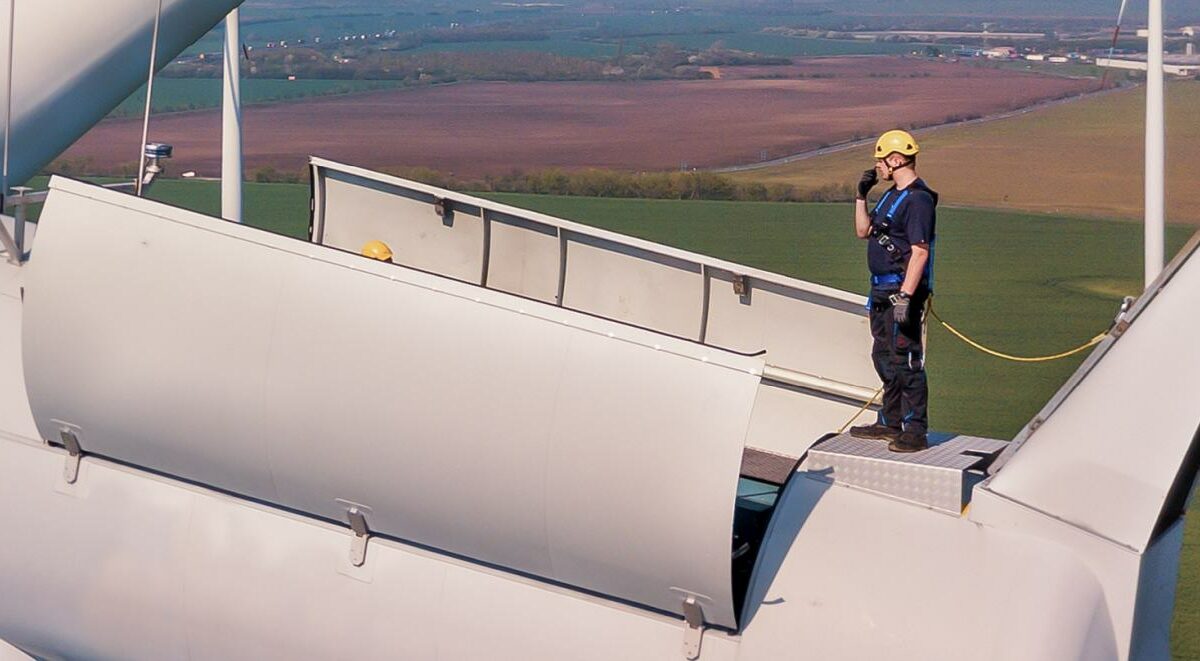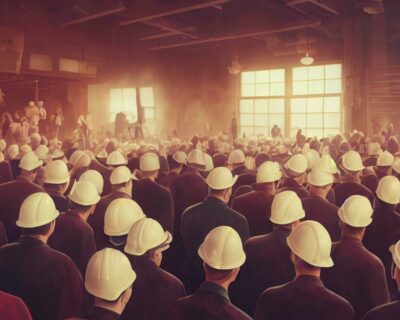
Wind Turbine Technicians | How They Work Safely
Using wind to power our civilization is nothing new. We used it to power our mills, trade, and other mechanical devices.
Yet those applications were fairly simple compared to wind turbines. Wind turbines generate megajoules of energy that can be incredibly dangerous for anyone with their hands in the wrong place. And you need to build them high to get the efficiency you require. So with that in mind, we’d like to dive into the life of a wind turbine technician and how they maintain these technological marvels safely.
Explore Wind Turbine Technicians:
Wind Turbine Technician Hazards
Confined spaces, heights, and electrocution are all dangers wind technicians are exposed to daily. And surprise, surprise, there is a lot of wind—at least 10 miles per hour of wind. When you combine all these together, it makes for a perilous working environment.
Wind technicians are required to work in some of the windiest places on the planet. They work in the Atlantic, off barges and boats thrashed by the sea. Which is a demanding environment both from the stress of the wind on the blades and the corrosive nature of the sea.
And they work in some of the windiest planes at daunting heights. All of these locations require nerves and patience. Wind technicians must climb to their work stations before they even begin. And after a long job, they must carefully climb down. Which, managing a safe pace, can be exhausting in itself.
How Wind Technicians Work Safely
Wind turbine technicians rely on their training and diligence to stay safe. They require confined space, fall arrest, and arc flash training to get the job done safely. However, that’s not all, depending on where the wind turbines are. There are plenty of other training courses and even diplomas the technicians can benefit from. And there’s a good amount of equipment they need to use and understand before proceeding. Common equipment for wind technicians include:
- harnesses – These are essential in just about every stage of work on wind turbines due to the guts of the machines being over 300 metres above ground.
- lanyards – Lanyards are crucial for the same reason harnesses are when working on wind turbines. Twin leg lanyards are the most common and useful lanyard for wind turbine technicians due to ladder climbing and the need for multiple tie off points.
- gloves – A3-6 insulated gloves are the go to for wind technicians due to the risk of shock from capacitors and cold environments.
- co2 monitors – Co2 monitors help the technicians determine if the confined space is safe for work or entry.
- respirator masks – When grinding or performing other abrasive work, wind turbine technicians wear respirators to mitigate dangerous particulates like aluminum from entering their lungs.
- radios – Wind turbine technicians normally work in teams of two or 3 and use radios to maintain communication with a supervisor nearby.
- multimeter scope – Like many other jobs using circuit boards and complex wiring, wind turbine techs use multimeters for diagnostics, and even the safety of a circuit.
- strategic clothing – Technicians wear layered clothing to stay warm and safe in the magnified elements. There’s weather technicians simply won’t work in, and naturally they pay close attention to the forecast. Some wear wind resistant clothing, however many prefer the layered approach to allow some heat to escape and prevent sweating. Staying dry is crucial due to wind freezing damp clothing.

Wind Turbine Technicians Safety Protocols:
- Planning – Sometimes a technician can tell what is wrong with a turbine or what maintenance needs to be performed simply by tapping into it from the ground and doing diagnostics. However, sometimes this is impossible, and a technician needs to climb the ladder just to properly diagnose issues. This can be exhausting, but it is all part of the planning process that ensures all parties involved know exactly what is required of them before the heavy work or lifting begins. The planning and diagnostics is vital to the technicians safety. Cutting out uncertainties is a tremendous leap toward safe operations.
- Equipment Supply –Technicians work side by side with cranes mainly due to them not being able to ascend the ladder with large tools or pieces. So signal training and rigging training both enhance the safety of both the crane operators and the technicians. The technicians and operators create plans together before lifting or working. They recreate these plans when things change to mitigate confusion.
- Communication practices –Communication, like mentioned above, is crucial. Safe operations rely on good plans and coordination. So technicians rely on good communication to operate safely together. Sometimes it can be difficult to hear each other up there, so technicians use hand signals and even ear piece communicators to collaborate.
- Weather – Weather is another major concern for wind turbine technicians. It’s true they always are operating in winds that exceed 10 miles per hour, but there are limits. Freezing temperatures and snow can make the job extra perilous, and naturally supervisors surveil the weather to keep their teams in safe working thresholds.


























